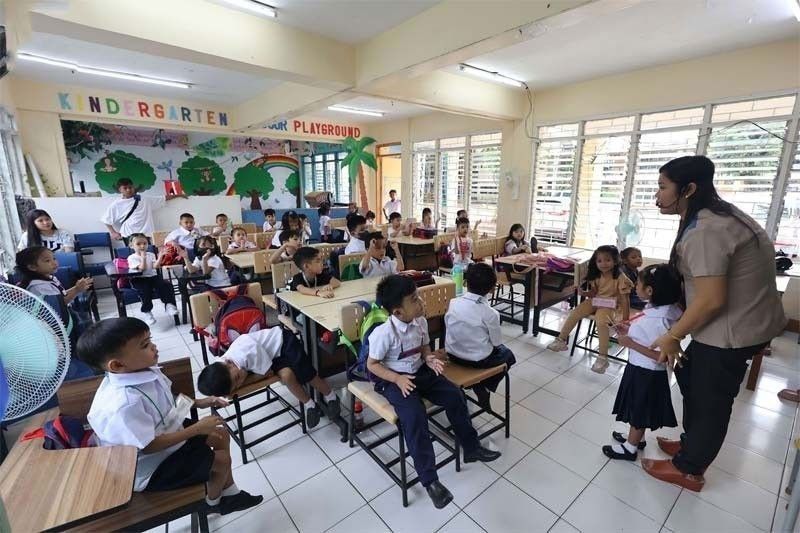‘Teachers’ plight, government neglect led to poor PISA performance’

MANILA, Philippines — The government’s years of neglect of the pressing problems in the education sector, including the welfare of teachers, led to Filipino students’ poor performance in the latest Program for International Student Assessment (PISA), the Teachers’ Dignity Coalition (TDC) said.
“The PISA result for 2022 does not come as a surprise. Similar to 2018, the Philippines continues to lag behind in terms of student academic achievement in the areas of science, mathematics and reading,” the TDC said in a press statement.
“This can be attributed to the lack of substantive measures taken to address the fundamental challenges in the education sector, in addition to the pandemic-related factors,” it added.
Based on the 2022 PISA results announced by the Organization for Economic Cooperation and Development (OECD) last Tuesday, the Philippines is still in the bottom ten, specifically at 76th out of 81 countries in terms of reading comprehension, mathematics and science.
The PISA, developed by OECD, measures 15-year-olds’ ability to use their reading, mathematics and science knowledge and skills to meet real-life challenges.
The Philippines first participated in the assessment in 2018 where it ranked last of the 79 countries.
While the Philippines moved up in rank, indicators of the 2022 test showed minimal improvement in the students’ performance.
Based on the OECD’s report, the mean scores of countries that participated in the 2022 PISA were 472 for mathematics, 476 for reading and 485 for science.
The Philippines scored about 120 points less than the average scores: 355 for math, 347 for reading and 373 for science.
The OECD said this meant that every 20 points lacking from the average represent one year of annual pace of learning of 15-year-olds in countries that participate in the PISA.
The Department of Education (DepEd), at a press conference a day after the release of the PISA report, admitted that the assessment results indicate that Filipino students are five to six years behind in learning competencies
“Although the DepEd admitted this ‘uncomfortable truth,’ it is important to note that this admission alone will not be sufficient to resolve the issue. The government needs to acknowledge that it has failed, and that failure can be attributed to the fact that it did not recognize the basic problems of the education system and neglected the dignity of its teachers,” the TDC said.
The TDC said the students’ poor performance, especially in reading comprehension, science and mathematics, has been a problem even before the pandemic, but the government did not address the issue nor initiate measures that would improve the quality of education in the country.
“It is important to keep in mind that problems existed long before the pandemic. The failure of the DepEd and the entire government to address the fundamental concerns is apparent in the following areas: insufficient learning materials and school facilities; overcrowded classrooms that are not favorable for learning; congested curriculum and socio-economic challenges to learners hailing from poor families,” the TDC said.
The group also slammed the government’s supposed continued neglect of the condition of teachers.
“In addition, the poor treatment of teachers, especially in terms of welfare, is perhaps one of the most pressing concerns. Teachers in the Philippines are among the lowest paid in the world... and the teaching profession is far from attractive to the best available talents, a violation of the constitutional mandate,” the TDC said.
“The education sector is confronted with these basic problems, each of which requires an outright and basic solution: government sincerity and political will,” it added.
Teachers’ licensure
Meanwhile, the Professional Reg[1]ulation Commission has announced that 23,782 elementary teachers and 53,995 secondary teachers passed the Licensure Examination for Professional Teachers given in September of this year. For the elementary level, Dulce Angeline Hernandez Arellano and Chelsea Lipana Tiaga, both from University of Santo Tomas (UST), topped the exams with a score of 94.40 percent.
Joshua Custodio Marimuthu of Laguna University placed second with a rating of 94.20 percent, while Marichu Famat Abregana from the Cebu Technological University, Alma Manlangit Brioso of Bicol University and Theresa Marie Enarle Cena of Silliman University came in at third place with 94 percent. For the secondary level, Trilbe Lizann Espina Vasquez of the Uni[1]versity of the Philippines (UP) Cebu got the highest rating of 94.80 percent.
Jaynel Evangelista Barzo of Uni[1]versity of Southern Mindanao was in second place with a rating of 94.40 percent. In third place was Matthew Kyle Yee Oronce of UP Diliman with a rating of 94.20 percent. — Rhodina Villanueva
- Latest
- Trending




























